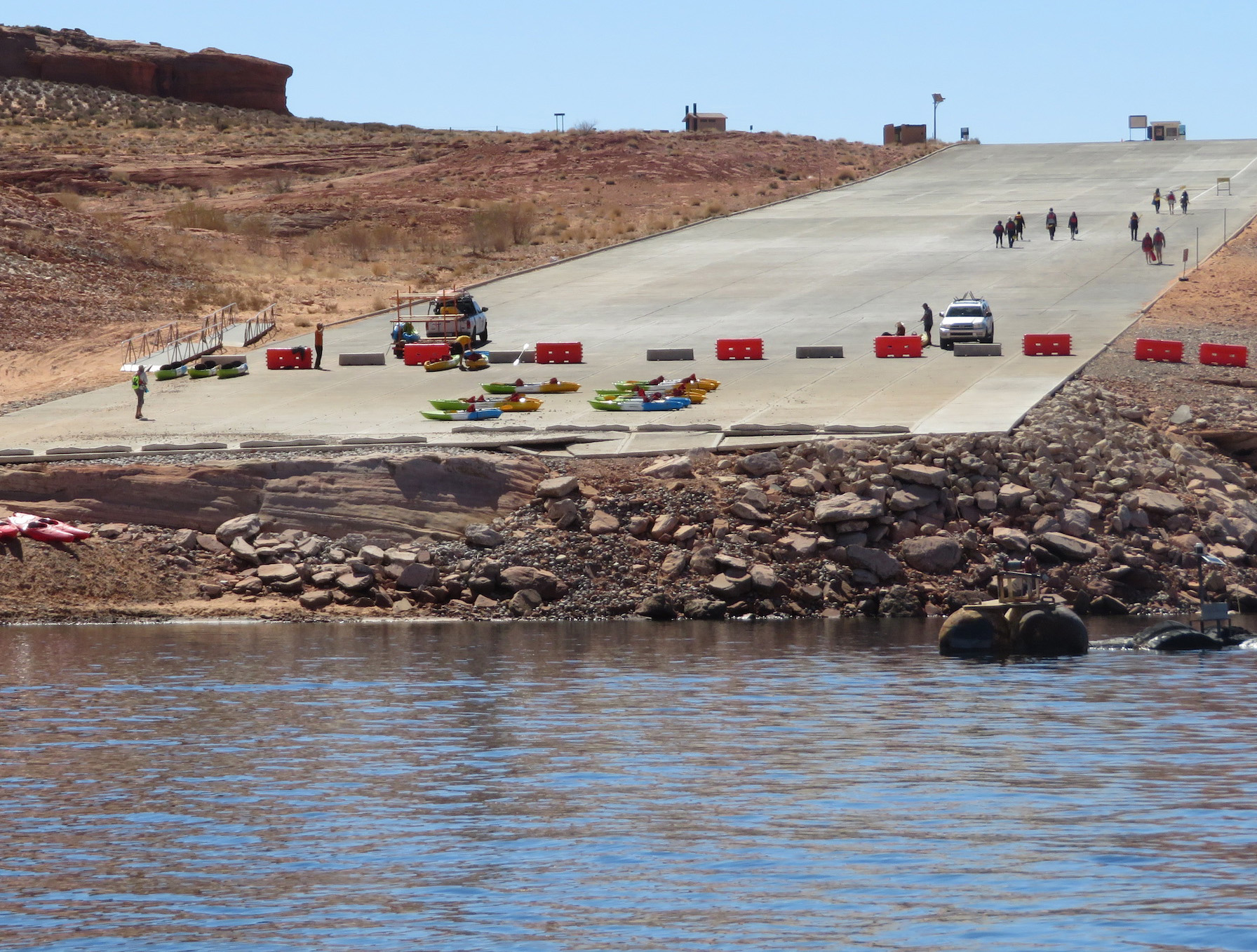
For Those Who Are Still Questioning Whether Or Not Utah Is Faced With Water Problems…
The Following Press Release Might Help You Better Understand The Situation We Are Faced With.
—–
HISTORICALLY LOW LAKE POWELL WATER LEVELS MAY BRING CHANGES TO SEVERAL BOATING ACCESS LOCATIONS
PAGE, Az. – Glen Canyon National Recreation Area is advising visitors to be aware of changes to water access points and boat launch areas on Lake Powell this year due to declining water levels through the summer. According to the Bureau of Reclamation (BOR) forecasts for 2021 and 2022, Lake Powell water levels will continue to drop.
Boaters should check the status of their preferred launch destinations before heading to the lake. The latest information on current boat launch and marina facilities can be found at: https://www.nps.gov/glca/planyourvisit/conditions.htm. The park regularly makes adjustments to infrastructures such as launch ramps, floating docks, and walkways to accommodate fluctuating lake levels and to maintain visitor access to the maximum extent possible.
Currently, the Bullfrog Main Launch Ramp, Antelope Point Public Launch Ramp, Hite Launch Ramp, Stateline Launch Ramp, and Castle Rock Cut are closed. Bullfrog North Launch Ramp, Wahweap Main Launch Ramp, and the Halls Crossing Launch Ramp remain open. Stateline Launch Ramp at Wahweap will reopen for the season on April 26. These boat ramps will remain open as long as conditions allow. Due to a steep drop-off and predictions for low lake levels this summer, the Antelope Point Public Launch Ramp will likely remain closed to motorized vessels this season; however human-powered vessels may launch there (kayaks, canoes, paddleboards).
Boaters should be aware that typical recreational access may be impacted by low water and should check the park website frequently while planning to visit. Longer lines and limited parking may occur, and visitors are advised to exercise caution due to a higher concentration of boaters in the same area. Boaters should be aware that as water levels drop, channels may narrow leading to increased boat congestion.
Due to the 20-year historic drought, including the last ten years of extreme drought reflecting the effects of a changing climate in the Colorado River basin, projections from the Bureau of Reclamation indicate Lake Powell’s water level may drop as low as 3,540 feet of elevation above sea level. This would be the lowest water level experienced at Lake Powell since 1968. Current lake level information is available at 40-Day Data | Water Operations | UC Region | Bureau of Reclamation (usbr.gov).
Viewpoints and perspectives expressed throughout The Independent are those of the individual contributors. They do not necessarily reflect those held by the staff of The Independent or our advertising sponsors. Your comments, rebuttals, and contributions are welcome in accordance with our Terms of Service. Please be respectful and abide by our Community Rules. If you have privacy concerns you can view our Privacy Policy here. Thank you!
Click here to submit an article, guest opinion piece, or a Letter to the Editor





Drought is real. This is another reason the lake Powell pipeline must not be built. And it’s time for a moratorium on home building.
Yes, yes, yes!